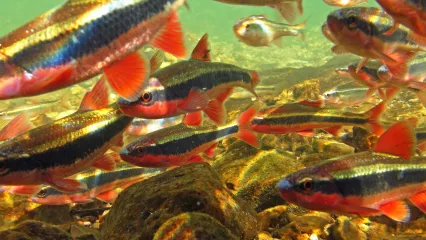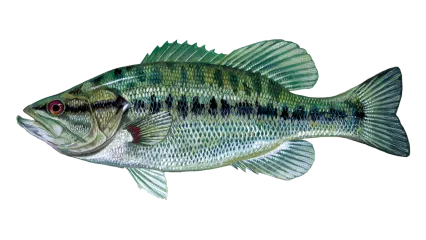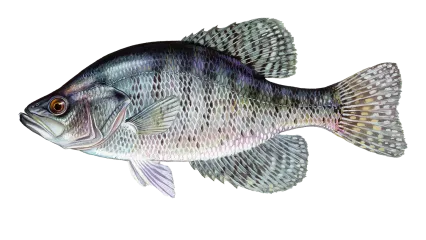
Description
Found in the Poteau, Illinois, Red and Neosho rivers in Oklahoma and in several lakes and reservoirs around the state.
Oklahoma is fortunate to have these unique species of the perch family in many of its lakes. To identify them, first look at the spiny dorsal fin. The walleye will have no spots on this fin; the sauger will have distinct spots; and the hybrid of the two species, the saugeye, will have spots and bars in the webbing of its spiny dorsal fin. The color of the fish and the presence or absence of the cheek scales may also help identify the difference. The eyes of this species give off an eerie glow due to the tapetum lucidum, a reflective layer on the retina, This adaptation is for feeding at night in low light levels.
Facts: One of the two largest members of the family Percidae, the sauger is a streamlined predator with relatively high fins, moderately large eyes and a large mouth.
Habitat
Sauger are primarily a river and stream fish preferring the clear eastern river. It is not abundant anywhere and seems to be rare in the tailwaters below Lake Texoma.
Food sources: Adults feed largely on fish, the young mainly taking invertebrates and small fish.
Life Cycle
The sauger is a spring spawner but little is known about its biology in Oklahoma. Spawning occurs at night and is completed within two weeks, eggs are scattered over a firm substrate by females, with multiple males attending each female. No nest is constructed and no parental care is provided.


